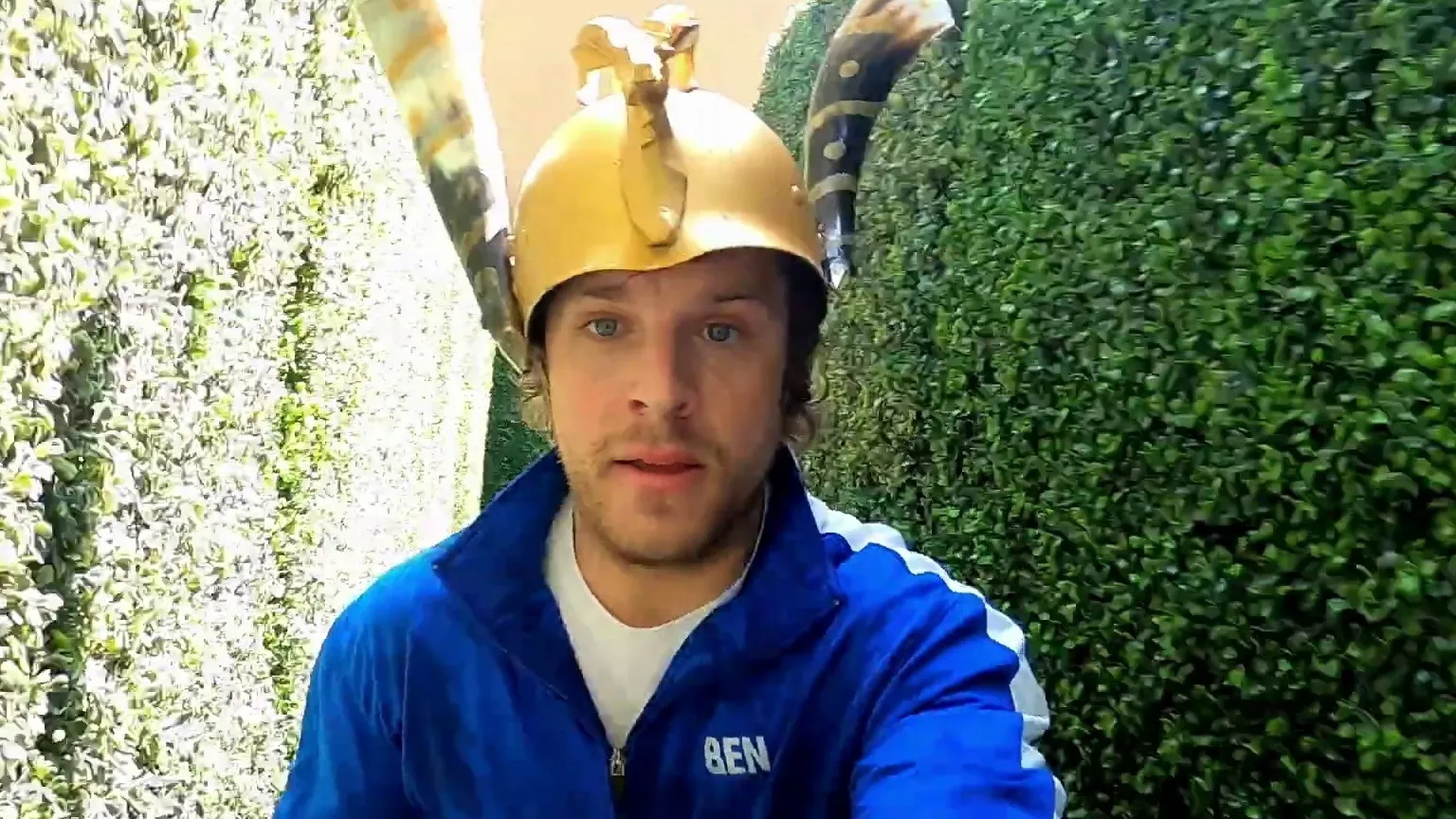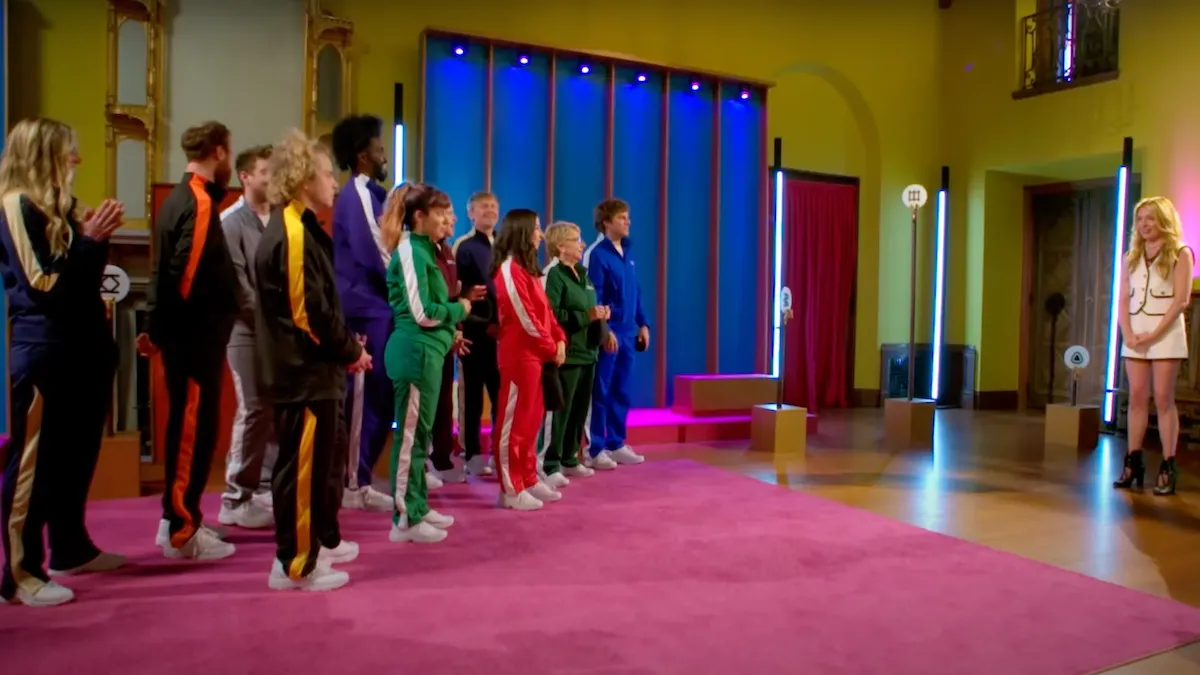At the outset, the series places an ordinary individual at the heart of an elaborate ruse. A regular contestant finds himself immersed in a contest that has been meticulously staged, his genuine reactions serving as the only unscripted element.
This setup challenges familiar expectations by contrasting instinctive behavior with predetermined scenarios, questioning the very nature of reality programming.
The show revives a format seen in previous editions, adapting a well-worn concept to a changing television environment. It reimagines a familiar idea, positioning a genuine everyman against a backdrop where every twist has been carefully planned by unseen hands.
The production has fashioned an arena where the tension between spontaneous responses and contrived situations is laid bare for the audience’s examination.
The environment is a character in itself, featuring a game element known as “The Goat,” which stages a series of challenges that test the protagonist’s natural instincts against scripted encounters.
The series artfully sets up scenarios that force the central figure to confront moments that appear unscripted, all the while hinting at the careful orchestration behind each event. This interplay invites viewers to reconsider the nature of televised contests and the authenticity of our reactions when reality is so meticulously contrived.
Premise, Concept, and Narrative Structure
The show centers on a single individual unexpectedly caught in a carefully orchestrated contest. An ordinary person, unprepared for the circumstances, finds his genuine reactions challenged by a setup that has been meticulously scripted.
The mechanics of this deception create a subtle tension as the viewer watches his instinctive behavior clash with the contrived scenarios around him.
The story follows the progression of the central character from a state of mild disbelief to moments of direct conflict with the planned sequence of events.
Early episodes hint at the artificial nature of his surroundings, and key scenes mark his growing suspicion as he begins to question the nature of his participation. These turning points serve as markers that gradually unravel the intricate design behind the contest, revealing the careful orchestration at play.
Integral to the narrative is the inclusion of “The Goat,” a game segment that features various physical contests and elimination rituals involving the so-called “Capricorn Clamps.” These moments are choreographed to elicit both humor and suspense, offering a series of challenges that test the protagonist’s natural responses against a backdrop of scripted absurdity.
The interplay between these orchestrated challenges and the unplanned reactions of the main character creates a layered effect that rewards close attention.
A notable aspect is the embedded meta-story that functions as a show within the show. This secondary narrative thread highlights the artifice of reality programming by placing staged events in parallel with spontaneous moments. The balance achieved between deliberately set pieces and authentic, unscripted interactions adds a curious texture to the overall storytelling.
The pace is measured in such a way that each segment builds tension, drawing the viewer toward the moment when the charade might finally be revealed. The structure remains tight, with narrative techniques that keep interest high even as the inherent irony of the setup remains ever present.
Character Analysis and Performances
Ben Frisone emerges as the heartbeat of the series. A 28-year-old electrician from Baltimore, he appears refreshingly grounded and sincere. His practical approach to life, combined with an understated sense of humor, makes him a figure with immediate appeal.
Ben’s ambition to use his winnings for sensible purposes—perhaps even a small personal indulgence—cements his status as an everyman worth rooting for. His evolution from initial confusion to a more measured stance against the staged contest is marked by moments where his natural skepticism disrupts the planned sequence of events.
Supporting characters occupy roles that remind us of well-worn reality TV archetypes. A charismatic competitor brings a flash of flamboyance, while an actor masquerading as a YouTube personality injects lively mischief.
Even brief appearances, such as the one played by a self-identified “Hollywood d-bag,” offer counterpoints that amplify the contrast between spontaneous behavior and overt theatricality. These figures function as both reflections and opposites to Ben’s authenticity, their exaggerated traits spotlighting the artifice that surrounds him.
The host, represented by someone like Cat Deeley, provides a steady, guiding presence. Her interventions, though minimal, help keep the narrative’s focus intact, lending an air of controlled order to the unfolding events. The production crew, working behind the scenes, exerts a subtle yet significant influence on the flow of action, with each manipulated twist sparking clashes against Ben’s unguarded responses.
Performances across the board exhibit a careful calibration between rehearsal and real-time reaction. Moments of genuine humor surface when Ben’s instinctive behavior meets the deliberately over-the-top antics of his fellow participants.
Interactions among the cast gradually reveal the layers of manipulation at play, offering glimpses into the ongoing contest between authenticity and fabrication. Casting choices that favor a grounded hero like Ben reflect a media trend that prizes modest, honest portrayals, a decision that resonates with viewers seeking characters who mirror everyday sensibilities.
Production Design and Execution
The set of this series strikes a deliberate balance between crisp visuals and elements that hint at a staged production. The overall look carries a precise air, while intentional low-budget touches suggest a construct meant to deceive.
Every prop and stage setup is arranged to underline the show’s underlying ploy. The elimination stocks, for example, serve as striking visual cues that heighten the surreal quality of the game segments.
Camera work is precise and controlled. Selected angles capture the dual nature of the presentation—carefully planned setups juxtaposed with moments of unexpected human reaction. Editing choices mix quick cuts with lingering shots to stress the contrast between contrived settings and genuine behavior. Each frame is composed to support the show’s theme of artifice, emphasizing both the humor and tension embedded in every scene.
Direction reveals a measured wit, with certain sequences designed to provoke a knowing smile. Specific scenes employ timing that couples suspense with a sharp sense of irony. The visual choices throughout the series reinforce the intended trickery, turning set limitations into narrative strengths.
Technical aspects, including special effects during challenges and elimination ceremonies, are handled with a precision that sustains viewer immersion. Even when the effects appear modest, they contribute a steady dose of disbelief that pulls the audience into the experience. The production team clearly makes deliberate use of every element to keep viewers alert to the show’s calculated nature.
Themes and Social Commentary
The series examines the contrast between genuine emotion and carefully staged scenarios. The central motif lies in the tension between what appears authentic and the meticulous planning behind every moment. This conflict calls attention to the craft behind reality television, where human reactions meet orchestrated sequences.
Ben’s presence underscores the idea that a sincere, unpretentious individual can disrupt a world of calculated performances. His practical behavior and modest aspirations stand as a counterpoint to the contrived atmosphere of the contest. His actions remind viewers that everyday decency has its own quiet strength, challenging the artifice that often characterizes television spectacles.
The production sets up a subtle commentary on behind-the-scenes control. The elaborate elimination rituals and simulated rivalries function as clear signals of a production designed to manipulate outcomes. Such devices highlight how the show turns familiar reality TV scenarios into a playful critique of its own genre.
The exaggerated set pieces, from the dramatic challenges to the theatrical ceremonies, serve not only to entertain but also to question the ethics behind manufactured entertainment.
The series also sends a message about public trust. It raises questions about the extent to which audiences accept staged events as genuine, prompting reflection on the nature of televised content. The interplay between unscripted human responses and prearranged events offers a thoughtful observation on how spectacle and sincerity coexist in modern media.
Underlying these themes are subtle hints at class, ambition, and the pressures of modern society. The scripted world on display becomes a mirror reflecting societal expectations and the pursuit of authenticity amid a sea of manipulation. Every element, from the narrative twists to the character interactions, contributes to a layered examination of our current media culture.
Audience Engagement and Entertainment Value
The series finds a way to mix scripted humor with unscripted reactions that catch viewers off guard. There are moments when the contest’s built-up tension suddenly flips into unexpected laughter, as the staged elements collide with the protagonist’s genuine responses.
Ben’s plainspoken nature and sharp wit create a rapport that draws the audience in. His spontaneous reactions in moments of uncertainty generate a palpable connection that feels both natural and gripping.
Certain scenes, where Ben’s quiet doubts lead to impromptu outbursts or reflective pauses, stand out amid the carefully arranged game show chaos. The pacing keeps things moving, with challenges that build tension before easing into lighter, humorous interludes. Each segment appears timed with care, allowing suspense to rise and fall without losing the viewer’s interest.
The show encourages its audience to question the veracity of its own setup, prompting viewers to reexamine how media portrays truth and performance. This self-referential twist invites quiet debates about the nature of televised contests and the role of genuine emotion in manufactured scenarios. The series balances biting satire with genuine moments of warmth, engaging viewers in a dialogue about the authenticity of what they see on screen.
The Review
The Joe Schmo Show Season 1
This series reworks reality TV norms with a clever twist, pairing artful misdirection and genuine character insights. Ben’s natural performance grounds the carefully staged chaos, keeping the narrative fresh and engaging. While it occasionally falls back on familiar beats, the production consistently offers thoughtful humor and tension. It stands as a smart critique of the genre's conventions, delivering both wit and heart in equal measure.
PROS
- Subtle commentary on media manipulation and modern celebrity culture.
- Moments of spontaneous humor that lighten the scripted tension.
CONS
- Occasional reliance on well-worn reality TV tropes.
- Pacing issues in certain segments that interrupt the flow.




















































